Three years ago, the idea of growing cherry trees in a greenhouse was born. It is now made up of 1,040 covered square meters with 1,000 plants inside, planted at a distance of 2 meters by 0.50 meters in a row. "The cherries are protected, so the number of treatments needed is 75% less than in the open field, and the quality is excellent," says Moreno Morisi, managing director of the family-owned Morisi Carlo in Bentivoglio, in the Italian province of Bologna.
Click here for the photo gallery.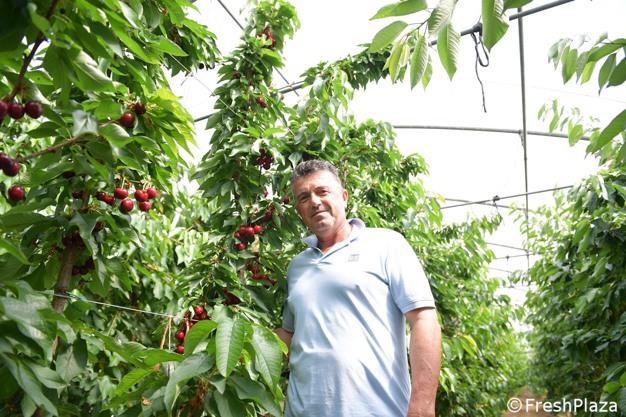 Moreno Morisi.
Moreno Morisi.
With the help of Fruitnetsystem technician Matteo Ferrari, Morisi used all his experience to achieve this result. "Growing fruit trees in greenhouses is not easy. My goal is not to anticipate the harvest but to complete the ripening of the fruit without damage from bad weather. About ten days ago, a heavy storm caused a lot of damage to the open field production. However, I did not see a single cracked fruit in my greenhouse-grown cherries."
Click here for the photo gallery
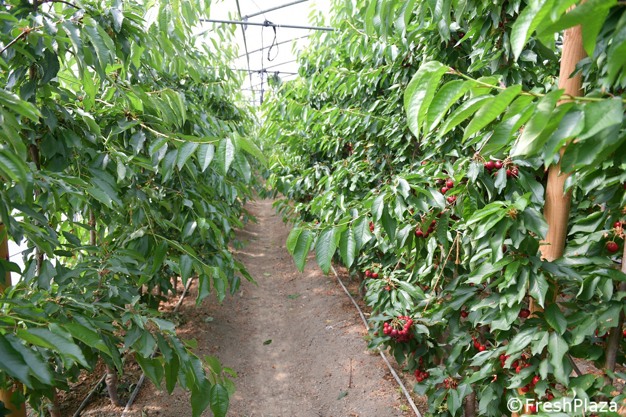 The cherry tree in the greenhouse. The temperature does not exceed that of the outside thanks to a white reflective net placed above the plastic net.
The cherry tree in the greenhouse. The temperature does not exceed that of the outside thanks to a white reflective net placed above the plastic net.
During this period, prices are very good, with sales ranging between 8 and 10 EUR/kg. "They like the cherries because they have a high °Brix, so both wholesalers and consumers are happy to pay for the goods and come back to buy again."
Click here for the photo gallery.
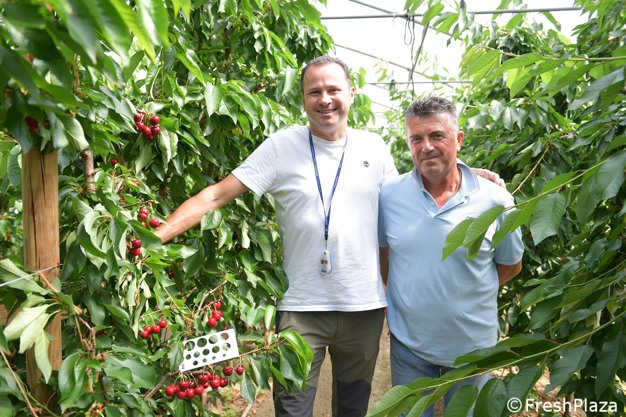 Matteo Ferrari (Fruitnetsystem) and Morisi.
Matteo Ferrari (Fruitnetsystem) and Morisi.
"Thanks to the net protection," says Ferrari, "the number of treatments is 75% less than in the open field. And only a few treatments are needed when harvesting. The anti-insect nets on the sides also prevent Drosophila infestation."
Click here for the photo gallery.
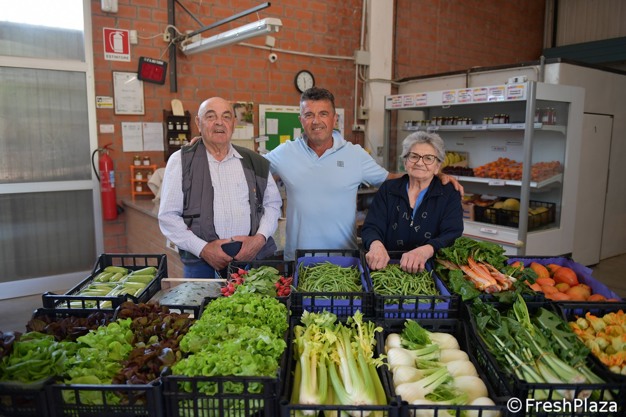 With his father, Carlo, and his mother, Marisa, in the company shop.
With his father, Carlo, and his mother, Marisa, in the company shop.
The varieties are mostly from the Sweet series: Ariana, Marisa, Lorenz, Saretta, as well as Kordia and Regina. "We do a lot of direct sales," explains Morisi, "so we have more varieties to increase the harvest. When we have large quantities of fruit or vegetables, we either take them to the wholesale market in Bologna or sell directly to supermarkets in the area."
Click here for the photo gallery.
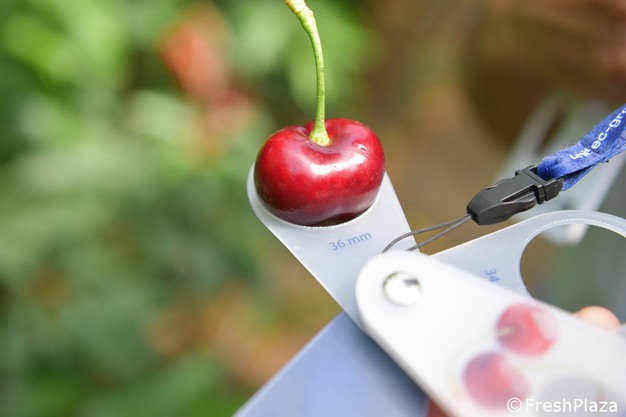 Gauge: 38mm or perhaps 40mm.
Gauge: 38mm or perhaps 40mm.
Morisi cultivates a total of 23 hectares. This includes fruit crops, greenhouse vegetables and extensive crops. Peaches, apricots, and pears are protected by hail covers, "but for cherries, rain covers alone would not be enough in view of certain weather events that are becoming more frequent."
Click here for the photo gallery.
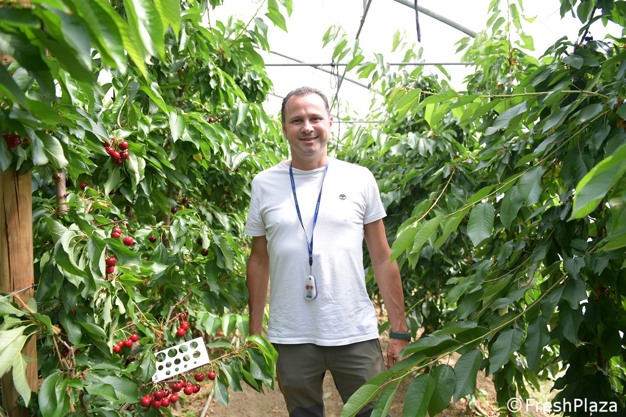 Matteo Ferrari in the plant under the greenhouse.
Matteo Ferrari in the plant under the greenhouse.
The average caliber of these cherries is unbelievable", says Ferrari, holding a tool. Almost all of them are over 32, not a few over 36. Only in the densest clusters is there a majority of 28-30, which is a truly remarkable size."
Click here for the photo gallery.
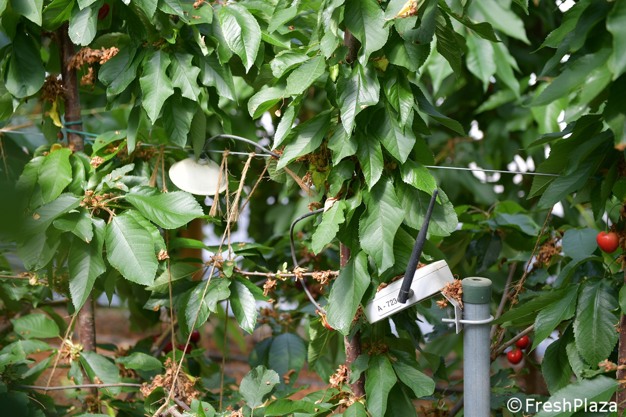 Data collection system.
Data collection system.
The ripening period is a little earlier, about 6-7 days earlier than in the open field, but Morisi insists that this is not important. "What is important is that I have reduced the number of treatments almost completely, so production is residue-free. And I have the guarantee of harvesting as much as budgeted."
"When working in the greenhouse," he continues, "it is very important to solarize the soil accurately. I aim for 45°C at a depth of 20 cm. This avoids most root system problems, both for vegetables and fruit."
For more information:
Az. Agr. Morisi Carlo
Via Saliceto, 40010
Bentivoglio (Bologna)
Tel.: +39 349.3440425
Email: [email protected]
